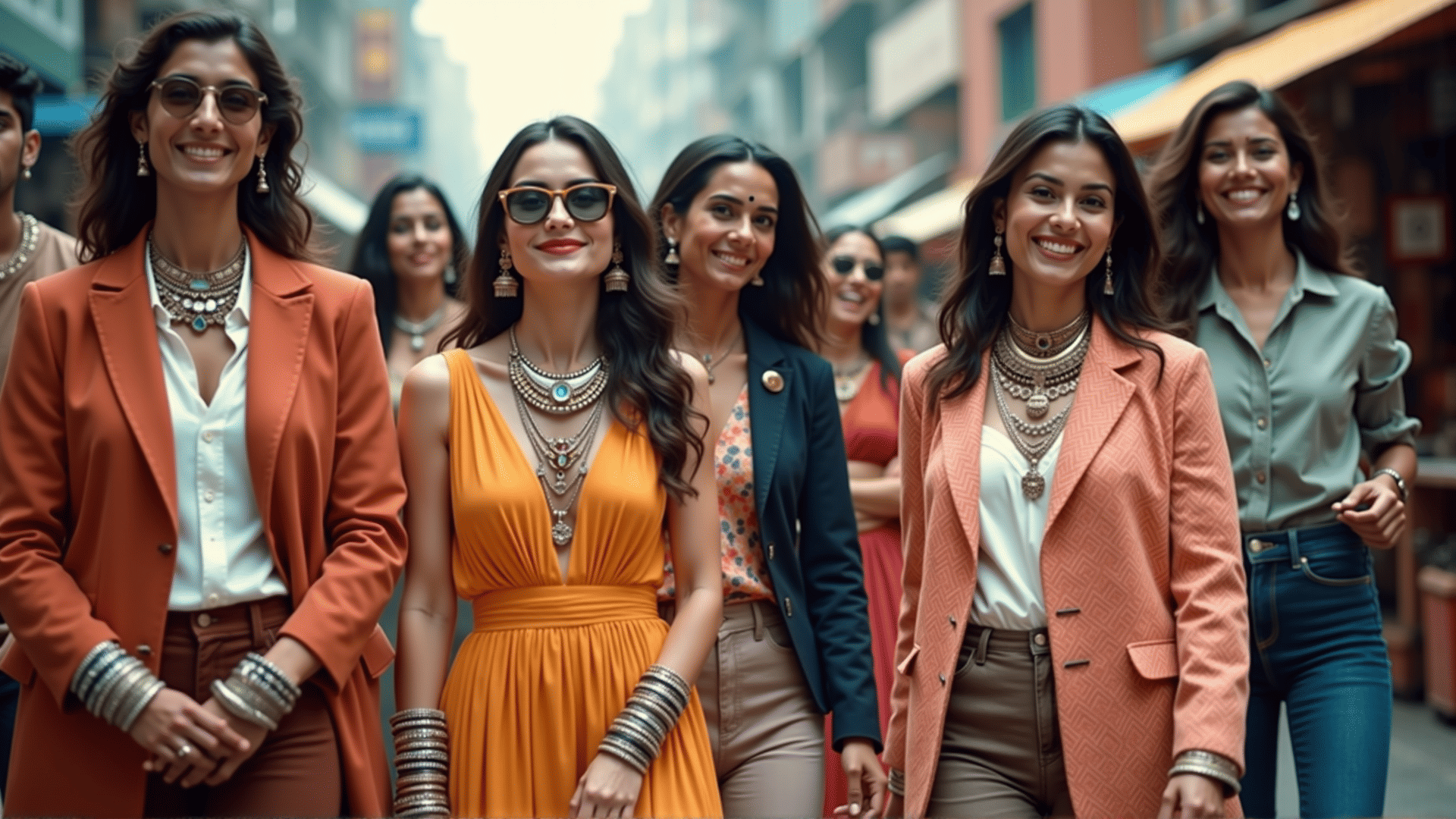In the vibrant tapestry of Indian fashion, a captivating interplay between tradition and modernity unfolds, creating a visual symphony that celebrates cultural heritage while embracing contemporary expression. This seamless fusion is nowhere more evident than in the art of accessorizing, where age-old elements are redefined and reimagined to complement modern Indian attire.
Traditionally, Indian accessories have been rife with symbolism and cultural significance. However, in today’s fashion landscape, they are more than mere adornments; they are bridges connecting the past with the present. The resurgence of these timeless elements in modern ensembles marks a conscious effort to retain cultural identity in an era of rapid globalization.
Jewelry, a cornerstone of Indian accessory heritage, showcases this blend impeccably. Take, for instance, the iconic maang tikka, a forehead ornament originally worn for auspicious occasions. Today, it graces the foreheads of brides and fashion-forward individuals alike, not only at weddings but also at parties and festivals across the globe. Designers have adapted traditional motifs to create maang tikkas that complement both ethnic and western outfits, thus breathing new life into this classic piece.
The quintessential nose ring, or nath, has also undergone a modern transformation. Previously ubiquitous in bridal ensembles, it now finds a place in everyday fashion, with minimalistic designs making it a versatile accessory. Paired with contemporary clothing, naths add a touch of ethnic chic, redefining individuality through a lens that harmonizes old-world charm with new-age style.
Bangles and bracelets, too, illustrate this beautiful confluence. Traditionally, bangles bore intricate craftsmanship, serving as symbols of marriage and femininity. Modern iterations, however, vary from sleek and minimalist cuffs to vibrant, chunky pieces that can be stacked to express personal taste. Whether crafted from traditional materials like gold and silver or modern alternatives like acrylic and leather, these accessories now transcend their ceremonial roots, appealing to a diverse audience.
In the realm of textiles, the humble dupatta and scarf have evolved into versatile style statements. Once primarily an element of modesty, they now serve as canvases for artistic expression, adorned with contemporary prints, digital patterns, and even embroidery that pays homage to age-old techniques, weaving stories of tradition into trendy contexts. Fashionistas drape these fabrics over denim, dresses, and formal wear, demonstrating that versatility lies at the heart of modern accessorizing.
The resurgence of Indian craftsmanship in accessories extends beyond jewelry and textiles. Footwear, particularly traditional juttis and kolhapuris, has found a prominent place in the wardrobes of the modern youth. Though inherently ethnic, their renewed popularity in fresh designs and vivid colors has made them staples for casual and semi-formal occasions. Brightly hued juttis can uplift a simple kurta or dress, effortlessly tying together an ensemble that respects its roots while stepping forward confidently.
Purses and clutches in Indian fashion echo this harmonious blend as well. Handcrafted pieces featuring traditional embroidery or beadwork are increasingly favored as standalone fashion statements. These intricate accessories often serve as contrasts to sleek, monochromatic outfits, showcasing a unique aesthetic where rustic charm meets sophisticated elegance.
As India marches forward into the future, the dialogue between its rich past and vibrant present continues to manifest through the fashion choices of its people. Accessories in modern Indian fashion, therefore, act as cherished tokens, weaving narratives from history while redefining style. They encapsulate the essence of a nation that embraces innovation without forgetting its origins—a nation where the past walks hand in hand with the present, in every bangle that jingles, every scarf that sways, and every bit of adornment that illuminates the streets, stages, and stories of India.
